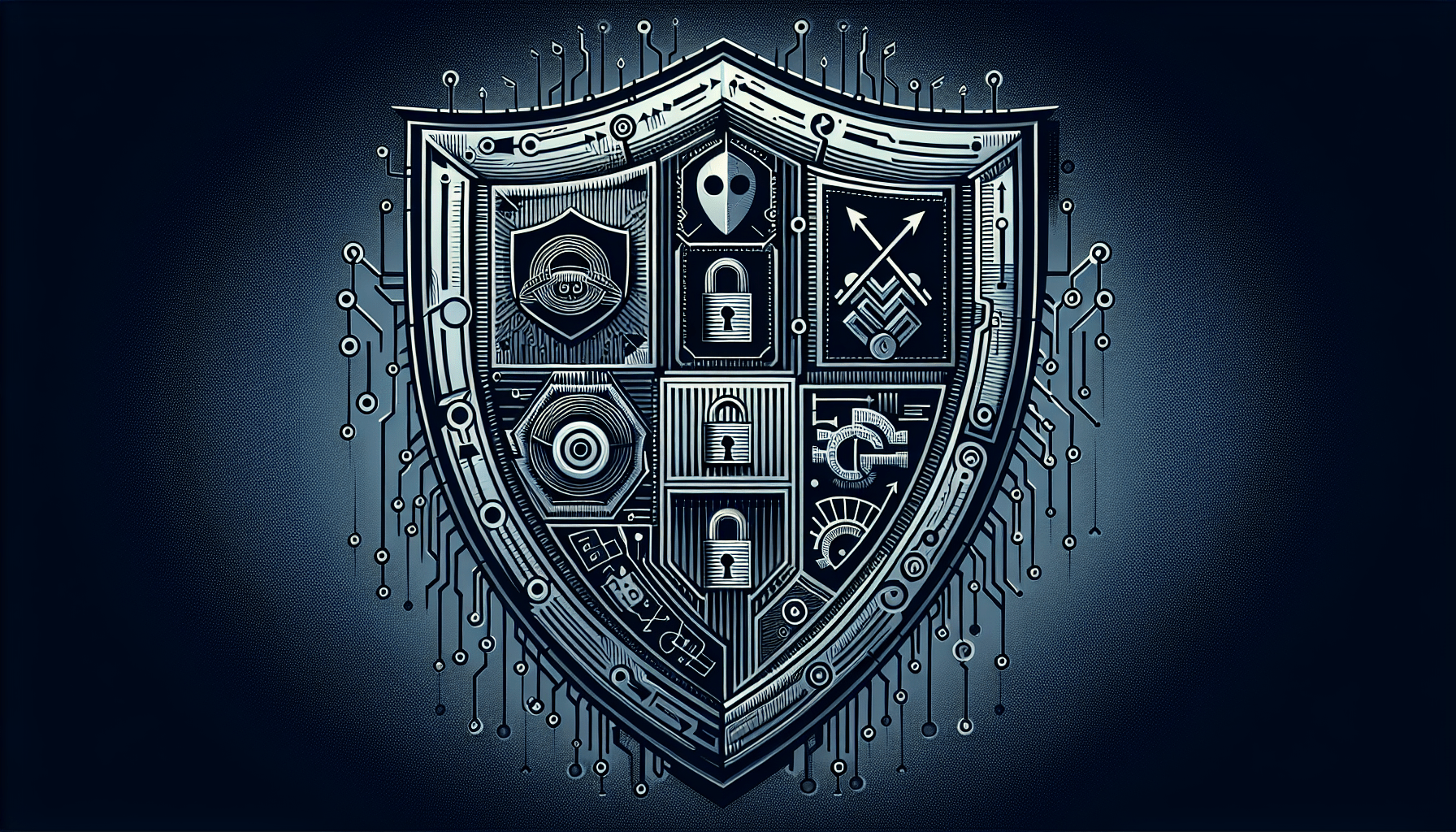In today’s increasingly digital world, the number of remote workers is on the rise, necessitating a shift in the way organizations approach security. It is crucial for businesses to prioritize the implementation of effective security awareness training programs for their remote workforce. This article provides valuable insights into the best practices and essential tips to ensure remote workers have the necessary knowledge and skills to protect sensitive information, prevent cyberattacks, and maintain a secure work environment. By staying informed and proactive, remote workers can play a vital role in safeguarding both their personal and professional data, ultimately contributing to the overall security posture of their organizations.
Importance of Security Awareness Training for Remote Workers
Understanding the Risks
Security awareness training is crucial for remote workers due to the unique risks they face. When working outside of a secure office environment, remote workers are more vulnerable to attacks such as cybersecurity threats and data breaches. The lack of physical security measures and the reliance on personal devices and networks expose remote workers to potential risks. Therefore, understanding these risks is the first step in ensuring the safety and security of company data.
Protecting Company Data
Remote workers often have access to sensitive company information, making it essential to protect this data. Security awareness training equips remote workers with the knowledge and skills necessary to safeguard company data from unauthorized access, malicious software, and other cybersecurity threats. By educating remote workers on secure data management practices, such as encryption, regular data backups, and secure file sharing methods, the risk of data breaches can be significantly reduced.
Preventing Security Breaches
Security breaches can have severe consequences for organizations, including financial losses, damage to reputation, and legal implications. Remote workers represent potential entry points for attackers aiming to infiltrate company networks and systems. Security awareness training plays a vital role in preventing these breaches by educating remote workers about the common techniques used by malicious actors, including phishing attacks, social engineering, and password vulnerabilities. By understanding these threats, remote workers can be proactive in identifying and mitigating potential risks.
Setting Up Effective Security Awareness Training
Identifying Training Needs
Before implementing security awareness training, it is crucial to identify the specific training needs of remote workers. This can be done through a comprehensive assessment that analyzes their current knowledge and vulnerabilities. By understanding the training needs, organizations can tailor their training programs to address specific areas of weakness, ensuring that remote workers receive the most relevant and effective training.
Creating a Training Plan
A well-structured training plan is essential to ensure that remote workers receive comprehensive and consistent security awareness training. The plan should outline the topics to be covered, the training methods to be used, and the timeline for delivery. It should also consider the different learning styles and preferences of remote workers to maximize the effectiveness of the training program.
Choosing the Right Training Methods
Remote workers may have different learning preferences and technological capabilities. Therefore, it is important to choose training methods that are accessible and engaging. Some effective training methods for remote workers include online courses, virtual workshops, interactive modules, and video tutorials. Employing a variety of training methods can accommodate various learning styles and ensure a more engaging and effective training experience for remote workers.

Topics to Cover in Security Awareness Training
Identifying Phishing Attacks
Phishing attacks are one of the most common and effective methods used by hackers to gain unauthorized access to sensitive information. Remote workers should be educated on how to identify phishing emails, suspicious links, and requests for personal or financial information. By understanding the red flags and common tactics used in phishing attacks, remote workers can avoid falling victim to these scams and protect company data.
Using Strong Passwords
Weak passwords are a significant security risk, as they can easily be hacked or guessed by attackers. Remote workers should be trained on creating strong and unique passwords, as well as using password managers to securely store and manage their passwords. By employing strong passwords and practicing good password hygiene, remote workers can significantly enhance the security of their accounts and the systems they access.
Securing Home Wi-Fi Networks
Remote workers often rely on their home Wi-Fi networks to connect to company resources. However, these networks can be vulnerable to unauthorized access if proper security measures are not in place. Security awareness training should cover best practices for securing home Wi-Fi networks, such as changing default router passwords, enabling encryption protocols, and regularly updating firmware. By securing their home networks, remote workers can prevent unauthorized access and protect company data.
Recognizing Social Engineering Techniques
Social engineering techniques involve manipulating individuals into revealing sensitive information or performing actions that compromise security. Remote workers should be trained to recognize and avoid falling victim to social engineering attempts, such as pretexting, baiting, and tailgating. By understanding these techniques and practicing skepticism, remote workers can safeguard themselves and the organization against social engineering attacks.
Creating Engaging Training Materials
Adding Interactive Elements
To ensure the effectiveness and engagement of security awareness training, it is essential to incorporate interactive elements into the training materials. Interactive elements can include quizzes, simulations, case studies, and interactive exercises. These elements encourage active participation, enhance knowledge retention, and provide practical application opportunities for remote workers. By making the training experience interactive, remote workers are more likely to understand complex concepts and apply them in real-world scenarios.
Incorporating Real-Life Scenarios
Training materials should include real-life scenarios that remote workers may encounter in their day-to-day work. By presenting relatable and practical situations, remote workers can better understand and apply security best practices. Real-life scenarios help bridge the gap between theoretical knowledge and practical implementation, enabling remote workers to make informed decisions and react appropriately to security threats.
Using Gamification Techniques
Gamification techniques can enhance the engagement and motivation of remote workers during security awareness training. By incorporating elements such as leaderboards, badges, and rewards, organizations can create a competitive and interactive training environment. Gamification increases interest and participation, making the training process enjoyable and memorable for remote workers. By leveraging gamification, organizations can effectively reinforce security concepts and encourage remote workers to adopt secure practices.

Frequency and Duration of Training Sessions
Determining Training Schedule
The frequency and duration of security awareness training sessions should be carefully considered to ensure optimal effectiveness. Remote workers may have varying availability and workloads, so it is important to create a training schedule that accommodates their needs. While there is no one-size-fits-all approach, shorter and more frequent sessions are generally more effective than longer, infrequent ones. Regular training sessions help reinforce knowledge and allow for the timely addressing of emerging threats and vulnerabilities.
Keeping Sessions Concise and Engaging
To maintain remote workers’ attention and maximize training effectiveness, it is important to keep training sessions concise and engaging. Lengthy training sessions can lead to information overload and reduced retention. By condensing training content into shorter, focused sessions, remote workers can absorb and retain information more effectively. Additionally, incorporating engaging elements such as interactive activities and multimedia can help sustain remote workers’ interest throughout the training process.
Ensuring Employee Participation and Understanding
Making Training Mandatory
To ensure comprehensive security awareness training, organizations should make it mandatory for all remote workers. By enforcing training requirements, organizations create a culture of security awareness where every employee understands the importance of protecting company data. Mandatory training also ensures that remote workers receive consistent and standardized security education, reducing the risk of knowledge gaps and security breaches.
Providing Clear Instructions
Clear instructions and guidelines are essential to ensure remote workers understand the expectations and objectives of security awareness training. Organizations should provide detailed instructions on accessing training materials, completing assessments, and reporting any security concerns. Clear instructions not only facilitate the training process but also demonstrate the organization’s commitment to cybersecurity and the importance of remote workers’ active participation.
Offering Incentives for Participation
To encourage remote workers’ active participation in security awareness training, organizations can offer incentives and rewards. Incentives can include recognition programs, monetary bonuses, or career advancement opportunities. By incentivizing participation, organizations motivate remote workers to prioritize security awareness training and foster a sense of ownership and responsibility in maintaining a secure work environment.
Monitoring and Evaluating Training Progress
Monitoring Employees’ Security Practices
Monitoring remote workers’ security practices can help identify areas of improvement and potential vulnerabilities. Organizations can implement monitoring tools to assess remote workers’ adherence to security policies, such as the use of secure networks, password hygiene, and data protection practices. Regular monitoring allows organizations to track progress, identify training needs, and address any lapses or non-compliance promptly.
Conducting Assessments and Surveys
Assessments and surveys can provide valuable insights into the effectiveness of security awareness training programs. Organizations can administer assessments to evaluate remote workers’ understanding of security concepts and identify knowledge gaps. Surveys can gather feedback on the training experience, allowing organizations to make improvements based on remote workers’ suggestions and preferences. By conducting assessments and surveys, organizations can continuously evaluate and enhance their training programs.
Addressing Weaknesses and Knowledge Gaps
Based on monitoring and assessment findings, organizations should proactively address weaknesses and knowledge gaps identified in security awareness training. This can include targeted supplementary training, individual coaching, or additional resources and support. By addressing weaknesses promptly, organizations can ensure remote workers receive the necessary education and support to strengthen their security practices and mitigate risks effectively.
Updating and Reinforcing Training Over Time
Keeping Up with Emerging Threats
The threat landscape is constantly evolving, and new vulnerabilities and attack vectors emerge regularly. It is essential for organizations to keep security awareness training up to date with these emerging threats. Regularly reviewing and updating training materials based on the latest security trends and incidents ensures that remote workers are equipped with the most current knowledge and practices to mitigate risks effectively.
Offering Refresher Courses and Workshops
In addition to staying current with emerging threats, organizations should offer periodic refresher courses and workshops to reinforce security awareness training. Refresher courses can revisit key concepts, address common mistakes, and provide updates on industry best practices. Workshops can provide remote workers with hands-on experience and practical skills in dealing with specific security scenarios. By offering refresher courses and workshops, organizations can refresh remote workers’ knowledge and maintain a culture of continuous learning and improvement.
Communicating Security Updates Regularly
Clear and regular communication of security updates is crucial to remote workers’ awareness and understanding of the ever-changing security landscape. Organizations should provide timely updates on emerging threats, new security policies, and any relevant incidents. Remote workers should be informed of potential risks and provided with resources and guidelines to mitigate those risks. By communicating security updates, organizations demonstrate their commitment to remote workers’ safety and security and ensure that they are equipped with the necessary information to protect company data.
Collaboration with IT Department
Involving IT Team in Training Program Design
Effective security awareness training requires collaboration between the training department and the IT team. The IT team can provide valuable insights into the specific vulnerabilities and threats faced by remote workers. By involving the IT team in the training program design, organizations can ensure that the training materials and methods address the most pressing security concerns and are aligned with the organization’s overall security strategy.
Establishing Reporting Procedures for Suspicious Activity
The IT team plays a critical role in incident response and threat management. Organizations should establish clear reporting procedures for remote workers to follow in the event of a security incident or suspicious activity. Remote workers should be aware of how and to whom they should report potential threats or breaches. By streamlining reporting procedures, organizations can respond promptly to security incidents and minimize the impact on company data and operations.
Coordinating Incident Response Plans
In the unfortunate event of a security breach, the IT team and remote workers must work together effectively to mitigate the damage and prevent further compromise. Security awareness training should include information on incident response plans and procedures, including remote workers’ responsibilities during a breach. By coordinating incident response plans, organizations can ensure a coordinated and efficient response, minimizing downtime and potential losses.
Tracking and Rewarding Progress
Implementing User Awareness Metrics
To track the effectiveness of security awareness training, organizations can implement user awareness metrics. These metrics can include measurements such as the number of reported incidents, successful phishing scenario awareness, completion rates of training modules, and adherence to security policies. By implementing user awareness metrics, organizations can evaluate the impact of training initiatives and identify areas requiring further improvement or reinforcement.
Recognizing and Rewarding Employees’ Contributions to Security
Recognizing and rewarding employees’ contributions to security can foster a positive and proactive security culture within the organization. Organizations can acknowledge employees who demonstrate exemplary security practices, report potential threats, or actively participate in security awareness training. Publicly recognizing these contributions through incentives, awards, or commendations encourages remote workers to actively engage in security practices and reinforces the importance of vigilance and awareness.
In conclusion, security awareness training is paramount for the safety and security of remote workers. By understanding the risks, protecting company data, and preventing security breaches, organizations can ensure that their remote workforce remains vigilant against cyber threats. Setting up effective training programs, covering important topics, creating engaging training materials, and regularly updating and reinforcing training are all crucial components of a comprehensive security awareness training program. Collaboration with the IT department, monitoring and evaluating training progress, and recognizing and rewarding employee contributions also contribute to a robust security culture. By investing in security awareness training for remote workers, organizations can mitigate risks, safeguard sensitive data, and protect their reputation and operations in an increasingly remote work environment.



